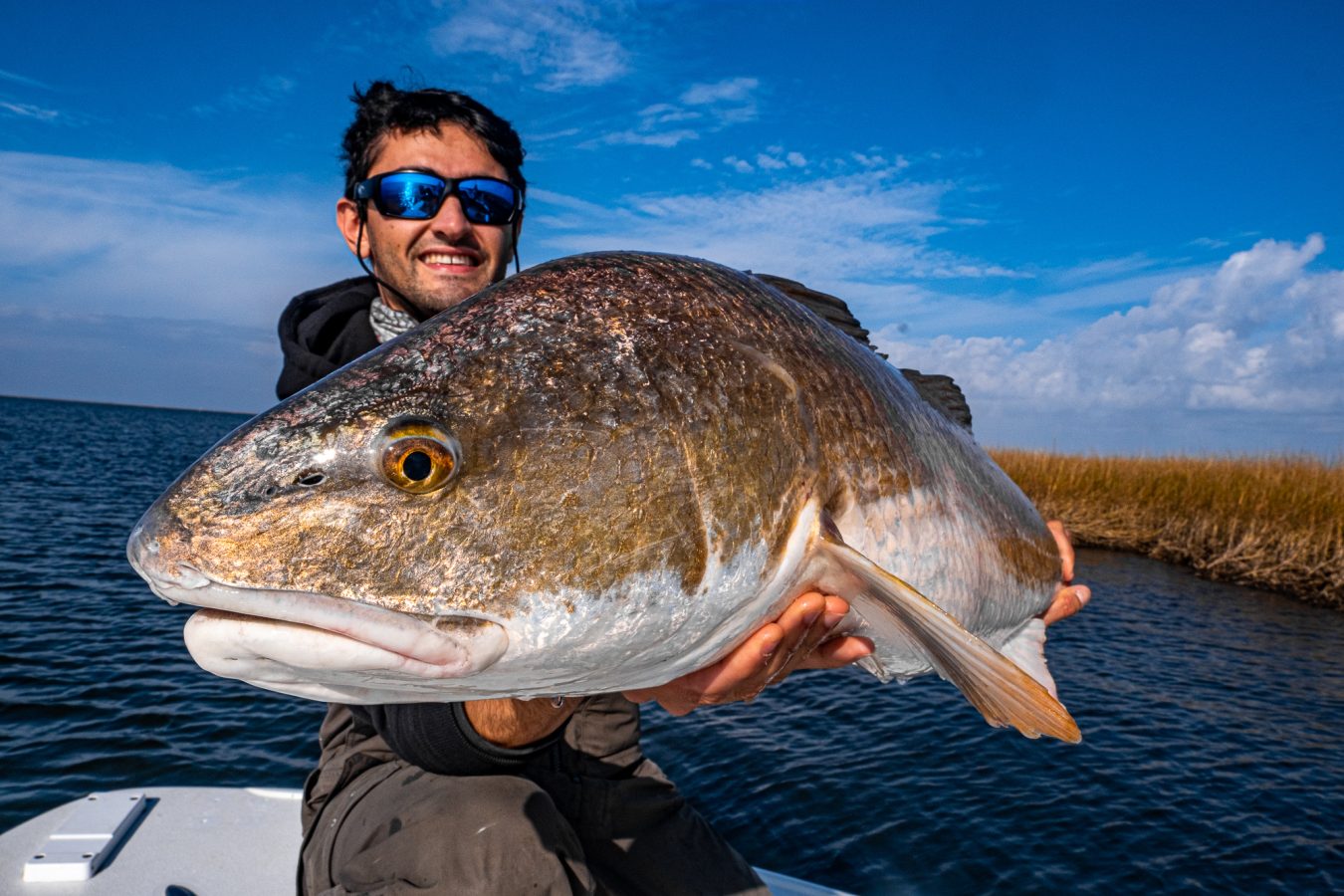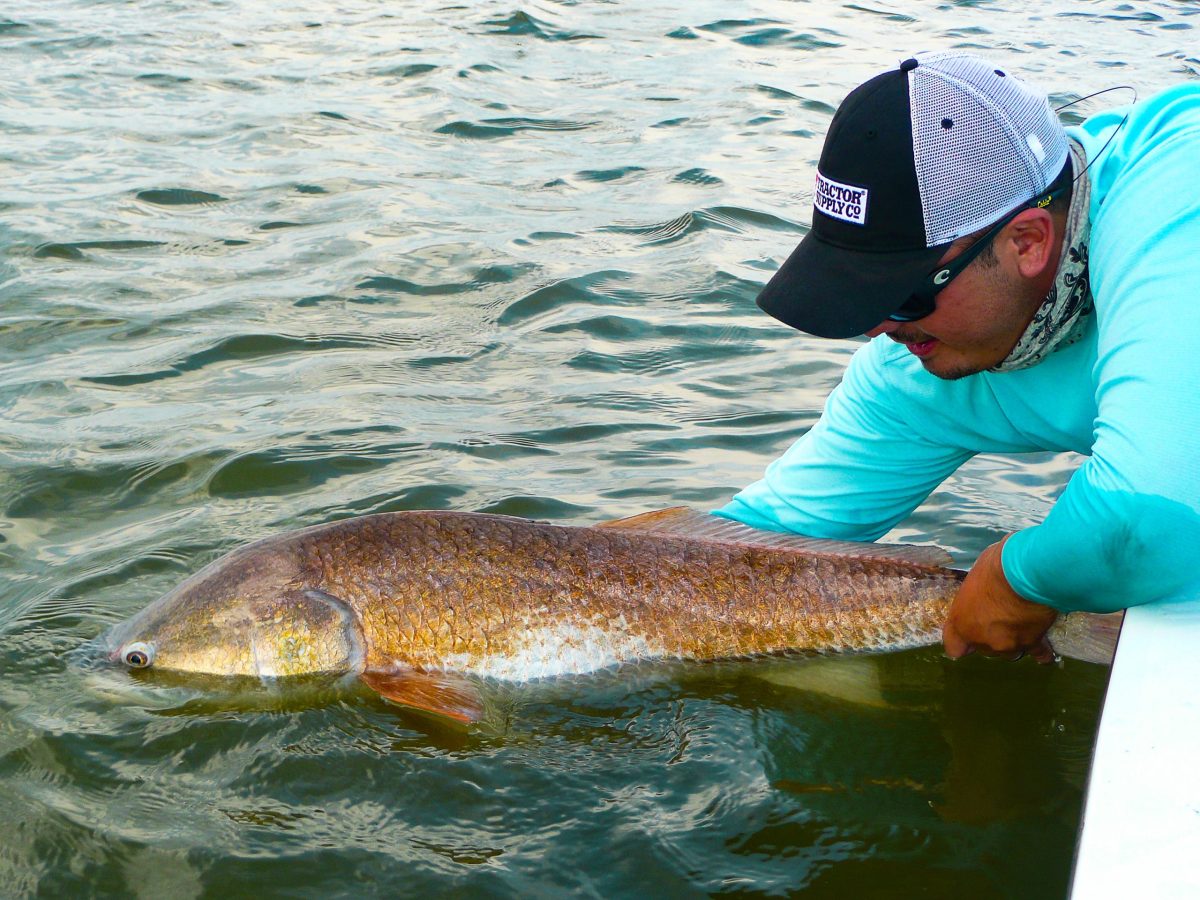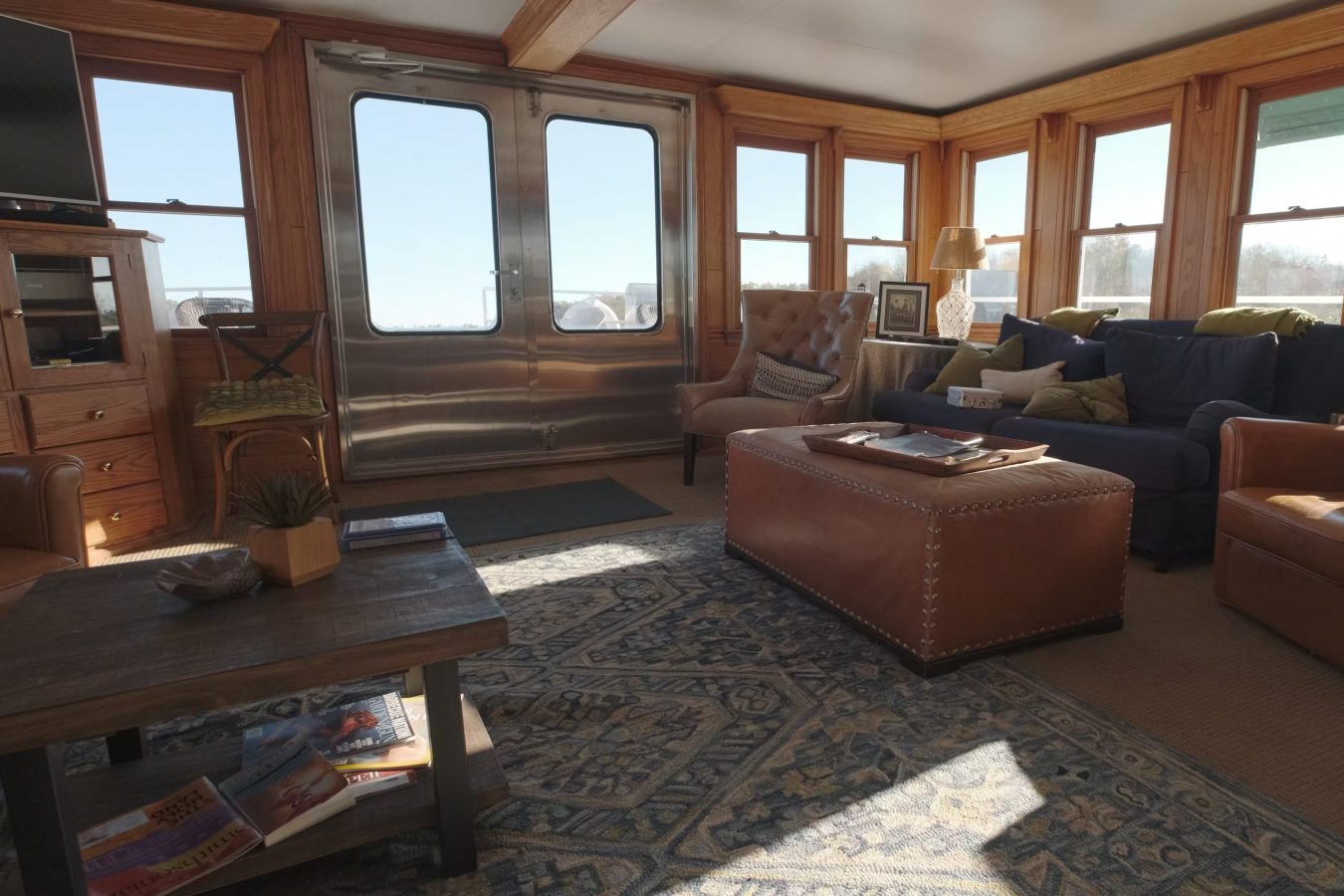Louisiana Red Bulls

Southeast Louisiana, home to spicy Cajun cuisine, jazz music, and the occasional hurricane has become one of the hottest saltwater fly-fishing destinations. While Louisiana does have generous fish limits, it’s the bull redfish—the large specimens exceeding the state’s allowed 16- to 27-inch slot size—prowling the marshes between Venice and Hopedale that attract anglers from around the globe. From late summer through the fall and winter, bull reds commonly weighing north of 30 pounds swim in water ranging from a few feet to just a few inches, presenting fly anglers with exceptional catch-and-release opportunities.
Redfish Capital
Driving down Highway 23 on the west bank of the Mississippi River until you hit the end of the road takes you to the small-town of Venice, the “Redfish Capital of the World.” Hurricane Ida, a category 4 storm, ravaged the area in August 2021 making landfall with maximum sustained winds of 159 mph and causing severe flooding. Many homes and businesses fell victim to the storm, and the coastline was badly beaten. Residents were without power for many weeks but they still managed to slowly rebuild. And the fishing remains as good as ever.
However, with each major storm comes shifting landscapes and lost marshland, and not knowing if the last storm silted in a bayou or if debris from the hurricane hides below the surface can make running the passes in a flats skiff a bit challenging. But the constantly evolving coastline adds a unique element to the hunt for trophy-size redfish, even for the skilled angler.
Fishing Environments
Between the passes connecting the river with the Gulf of Mexico is a maze of canals, bayous, and duck ponds (named appropriately since waterfowl congregate in these areas during the colder months), each with the potential to be the redfish heaven so many fly fishers dream of. As the Mississippi River’s water level steadily drops during the summer, aquatic grasses such as hyacinth, duckweed, and Roseau cane act as a filter, creating prime sight-fishing conditions. High-salinity water creeps up the river during these low stages, pushing reds deep into the marshes, where fish as copper and shiny as a new penny float high in the brackish water, waiting for an unsuspecting crab or shrimp for their next meal.
The mouths of the passes can become feeding hotspots on tide changes as baitfish, crabs, and shrimp get sucked out of the lagoons during a falling tide. And on the outside beaches, redfish congregate during warm days and feast on schooling menhaden, called pogies by the locals.
Bull reds move from deep-cut bayous to shallow, open-water bays and marsh edges during warm fall and winter days, so poling a broad, shallow flat laden with oyster bars can be very productive. But weather in the fall, and especially in winter, can be unpredictable. Temperatures some days can be in the 80s, then a cold front could send temperatures plummeting to below freezing.
As the weather cools down and water temperatures drop, bull reds will find dark mud bottom to warm up. Windy days accompany cold fronts, but the slick-calm conditions that follow make for epic sight fishing. Light winds let the water clear, making the search for those giant redfish significantly easier. It’s not uncommon, in fact, to spot 30-pounders belly-crawling in less than a foot of water looking for shrimp.


Neighboring Hotspots
Other areas to explore near Venice include Buras, Port Sulphur, and Myrtle Grove. And to the northeast of Venice, in St. Bernard Parish, lie the small fishing villages of Delacroix and Hopedale, each only a quick 45-minute drive from the French Quarter in New Orleans. While only a few miles apart as the crow flies, the two locations offer very different fishing opportunities.
Delacroix sits to the west of Hopedale at the end of the road on Highway 300. Shallow duck ponds filled with aquatic grass are the setting for the game of redfish hide-and-seek in the summertime. Big bulls and slot-size specimens are both plentiful in this area, which produces the most beautiful, golden-hued redfish one will ever lay eyes on. The brackish marshes around these parts are a topwater fly angler’s dream. Redfish here will just crush poppers and gurglers with reckless abandon.
During the winter months, running some 10 miles to places like Lake Fortuna and Black Bay may be necessary for consistent bull action. The best water clarity is usually found along the outside marshes on calm days, and poling along edges and around points frequently results in multiple catches of fish exceeding 20 pounds.
Oyster and shrimp boats line the road as you reach Hopedale at the end of Highway 624. The waters surrounding this small commercial-fishing town are home to some of Louisiana’s largest bull redfish, which find plenty of chow in the expansive Biloxi Marsh nearby and the area’s countless duck ponds, bayous, outer sandbars and islands, including the famed Chandeleurs. And during late summer, interior marsh areas like Stump Lagoon and Pete’s Lagoon constantly host huge fish with a hankering for shrimp or crab.
In fall and winter, the bulls in the area make a move to the outer islands and oyster bars near Smack Bay and Skiff Lake. Water clarity there is also dependent on wind conditions, and while a strong north wind will empty the water from the duck ponds and create a barren mud pit, this place can be redfish Mecca when you hit the right weather window. Then, poling along outside edges, anglers can cast at giant tailers and belly crawlers to their heart’s content.
Fly Arsenal
Weedless spoon imitations such as the Waldner Spoon fly tied by Louisiana fly-fishing guide Rich Waldner, and the Sandbar Mullet, a baitfish pattern I came up with, work very well in the marshes where flies that sink with the hook point up are preferred to prevent snagging oysters and grass. Double Barrel Poppers and Pole Dancers, both of which push a lot of water and make noise to get the attention of any bulls feeding on or near the surface, are also excellent choices.
 Colors should be based on water clarity and cloud cover. Black and purple are standards on dreary, overcast days or murky water. On blue-sky days with clear water, chartreuse is hard to beat, but gold is also a great color for Louisiana bulls.
Colors should be based on water clarity and cloud cover. Black and purple are standards on dreary, overcast days or murky water. On blue-sky days with clear water, chartreuse is hard to beat, but gold is also a great color for Louisiana bulls.The Best Gear For Bull Redfish
An 8-weight fly outfit is standard for redfish, but when pursuing powerful, 30-pound bulls, you’ll want the added muscle of a 10-weight rod and a matching large-arbor reel with a couple of hundred yards of backing. A floating, weight-forward fly line is all you’ll need. And since Louisiana reds are not particularly skittish, leaders should be no more than 9 feet long for easier casting, ending on a 20-pound tippet to withstand the chaffing of a bull’s dentures.
Where to Stay
Dogwood Lodge is located just past the marina in Hopedale, a 45-minute drive southeast of New Orleans. The “lodge” is a historical U.S. Coast Guard buoy tender converted into a deluxe floating room and board and more that caters to anglers. It features a lounge area with wide-screen TV, complimentary bar, and six private rooms with baths.












